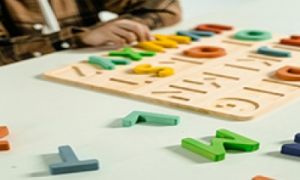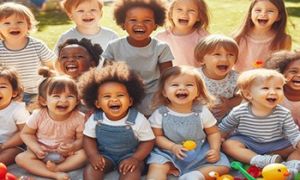

Gathering children's voices for a program is all about ensuring that their ideas, opinions, and creativity shape the activities and experiences they participate in. The following article provides information on How Does Gathering Children's Voices Enhance Their Learning?, What Are Practical Ways To Gather Children's Voices? What Are Tips For Engaging Children In Discussions? Example Plans For Gathering Children's Voice and more.
Quality Area 1 of the National Quality Standard focuses on Educational Program and Practice, ensuring that learning experiences are child-centered, stimulating, and engaging. Here are some practical examples of how this can be implemented in the workplace.
A: A photo observation in early childhood education is a visual documentation method used to capture a child's learning, development, and experiences.
Coming up with extension ideas during early childhood observations involves identifying ways to build on a child's interests, skills, and developmental needs. The following article provides strategies and examples of extension ideas.
A: A narrative observation in childcare is a detailed, written account of a child's actions, interactions, and behaviors over a specific period. It provides a rich, descriptive record of what the child is doing, saying, and experiencing in their environment.
Applying theorists in observations involves connecting your observations of children’s behaviors, interactions, and development to established theories of learning and development. This approach not only deepens your understanding of children’s needs but also aligns with the EYLF and the NQS. The following article provides information on Understanding Key Theorists and Their Concepts, Linking Observations to Theories, Incorporating Theories into Planning, Practical Examples and more.
A: A sociogram is a visual tool that maps out the social relationships in a group—in early childhood, this means it shows how the children interact with one another. Think of it as a snapshot of the social network within the learning environment.
When we talk about programming and planning for babies in early childhood, we’re really delving into a thoughtful approach that values infants’ rapid developmental growth, emotional needs, and emerging personalities. Australian early childhood education has evolved to recognize that even the very youngest need intentional, responsive programming embedded in a secure, nurturing environment. Here are some key aspects to consider.
 Here is the list of the EYLF Learning Outcomes that you can use as a guide or reference for your documentation and planning. The EYLF… Read More
Here is the list of the EYLF Learning Outcomes that you can use as a guide or reference for your documentation and planning. The EYLF… Read More
 The EYLF is a guide which consists of Principles, Practices and 5 main Learning Outcomes along with each of their sub outcomes, based on identity,… Read More
The EYLF is a guide which consists of Principles, Practices and 5 main Learning Outcomes along with each of their sub outcomes, based on identity,… Read More
 This is a guide on How to Write a Learning Story. It provides information on What Is A Learning Story, Writing A Learning Story, Sample… Read More
This is a guide on How to Write a Learning Story. It provides information on What Is A Learning Story, Writing A Learning Story, Sample… Read More
 One of the most important types of documentation methods that educators needs to be familiar with are “observations”. Observations are crucial for all early childhood… Read More
One of the most important types of documentation methods that educators needs to be familiar with are “observations”. Observations are crucial for all early childhood… Read More
 To support children achieve learning outcomes from the EYLF Framework, the following list gives educators examples of how to promote children's learning in each individual… Read More
To support children achieve learning outcomes from the EYLF Framework, the following list gives educators examples of how to promote children's learning in each individual… Read More
 Reflective practice is learning from everyday situations and issues and concerns that arise which form part of our daily routine while working in an early… Read More
Reflective practice is learning from everyday situations and issues and concerns that arise which form part of our daily routine while working in an early… Read More
 Within Australia, Programming and Planning is reflected and supported by the Early Years Learning Framework. Educators within early childhood settings, use the EYLF to guide… Read More
Within Australia, Programming and Planning is reflected and supported by the Early Years Learning Framework. Educators within early childhood settings, use the EYLF to guide… Read More
 When observing children, it's important that we use a range of different observation methods from running records, learning stories to photographs and work samples. Using… Read More
When observing children, it's important that we use a range of different observation methods from running records, learning stories to photographs and work samples. Using… Read More
 This is a guide for educators on what to observe under each sub learning outcome from the EYLF Framework, when a child is engaged in… Read More
This is a guide for educators on what to observe under each sub learning outcome from the EYLF Framework, when a child is engaged in… Read More
 The Early Years Learning Framework describes the curriculum as “all the interactions, experiences, activities, routines and events, planned and unplanned, that occur in an environment… Read More
The Early Years Learning Framework describes the curriculum as “all the interactions, experiences, activities, routines and events, planned and unplanned, that occur in an environment… Read More

Language and literacy experiences for preschoolers aged 3 to 5 are all about sparking curiosity...
See more...
A: Not necessarily! While follow-ups can be valuable, they aren't always required. Observations and learning...
See more...
Emotional regulation refers to the ability to recognize, understand, and manage one's emotions in a...
See more...© 2009-2025 Aussie Childcare Network Pty Ltd. All Rights Reserved.

